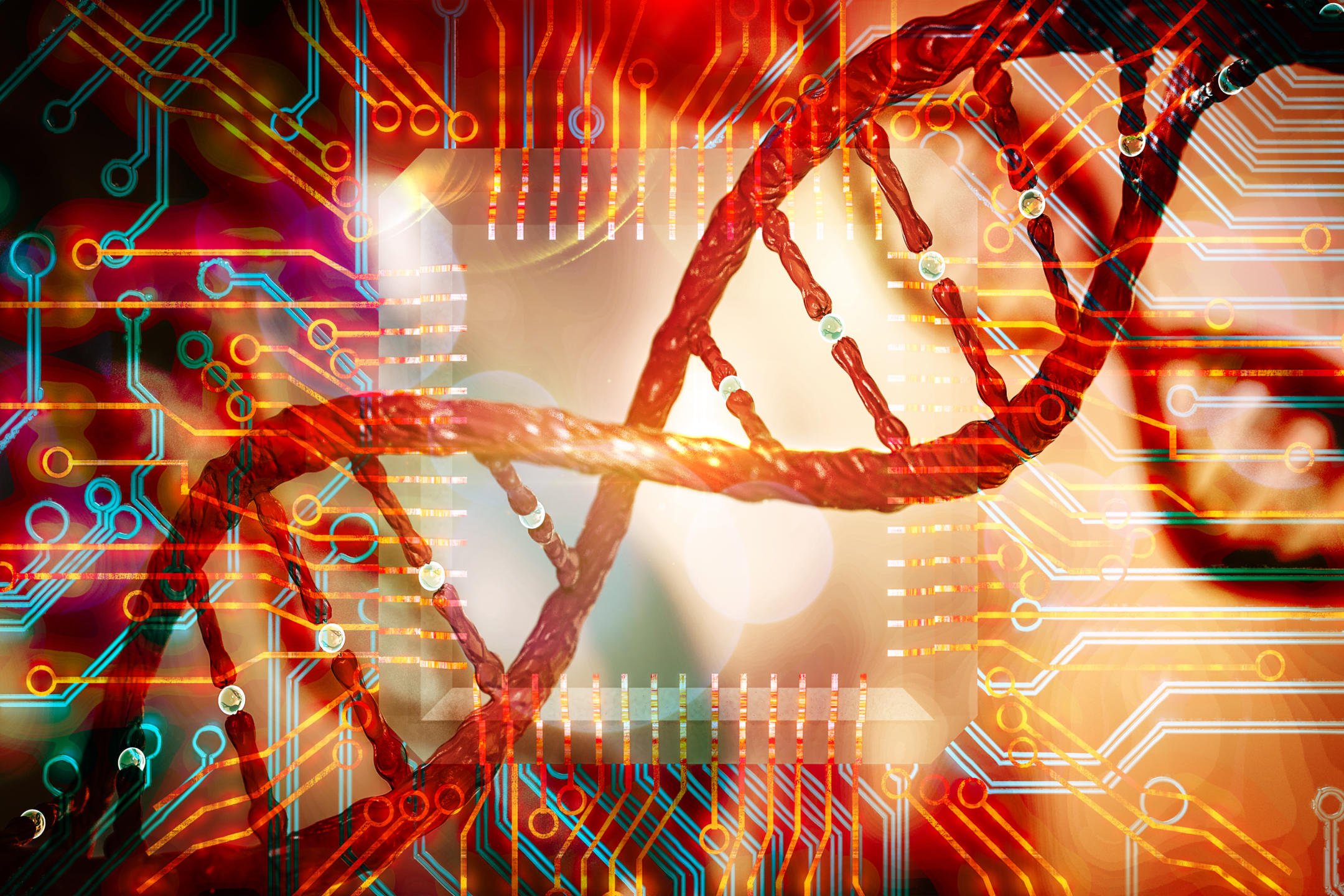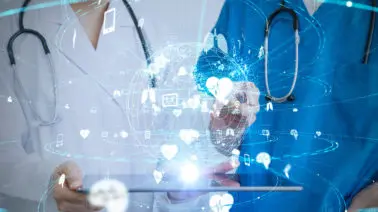Now more than ever, great attention is being paid to advancements in healthcare, including the race to find an effective vaccine for COVID-19.
Two fields, bioinformatics and artificial intelligence (AI), are playing critical roles in forever changing and advancing the healthcare industry.
Here’s how bioinformatics and AI are being used to improve the health of the population.

What is Bioinformatics?
Before understanding how bioinformatics and AI are improving population health, it’s important to understand what exactly bioinformatics is.
Bioinformatics combines computer science, data analytics, and biology, and is used for critical research including DNA sequencing, simulating biomolecular interactions, and analyzing biological networks.
It requires cross-disciplinary expertise, including programming, mathematics, and biology. Bioinformaticians work closely with biologists, technicians, and computational biologists to study data sets included in genomic, proteomic, and post-genomic databases.
Drawing on mathematical knowledge and complex analysis, the data sets that bioinformaticians analyze are extremely large and complex, often involving data from millions of people. As such, bioinformaticians are extremely skilled and in high demand.
How Do AI and Bioinformatics Work Together?
In the context of bioinformatics, AI can be used to help further clinical research and analysis that can result in the design of new drugs and vaccines, the diagnosis of diseases, and even the prediction of pandemics.
One example of how AI can be used in conjunction with bioinformatics is wearable tech. Consumers are already familiar with many types of wearable tech, such as fitness trackers or smart jewelry like watches or rings, and make personal use of the data they collect.
What they might not realize is that the real-time data that wearable tech can gather over a period of time can help track trends and identify signs of potentially fatal health issues, such as heart disease, much quicker and more accurately than spot tests conducted in a lab at a doctor’s office.
For more on wearable technology driven by AI, check out this AI For Healthcare Session.
AI and Bioinformatics on a Large Scale
When bioinformaticians analyze the data collected by millions of pieces of wearable tech using AI, they are able to study, predict, and prepare for large scale trends, such as pandemics.
At the AI for Healthcare in the Time of COVID-19 virtual conference, one keynote speaker, Dr. Eric Topol suggested that wearable technology could play a key role in helping identify COVID-19, as it is able to track irregularities in resting heart rate and body temperature. He said this is particularly important as the heart rate rises prior to a fever, so even without symptoms, AI can detect that a body is fighting a virus.
Having this data immediately available could result in alerting the person to get tested or self-quarantine to prevent the spread of the virus to others.
In a time when COVID-19 testing is critical and urgent, the combination of AI and bioinformatics will play an increasingly important role in healthcare and in tracking and monitoring public health.
Be at the Forefront of AI in Healthcare
There’s never been a greater need to focus on population health. The ability to identify and analyze health trends, and build the treatments of the future using AI and bioinformatics is a skillset that will only grow in importance and necessity in years to come.
In fact, the Healthcare AI market is projected to surge from $2.1 to $36.1 billion by 2025 due to the explosion of healthcare data. In the past seven years alone, healthcare data has increased 20-fold, making skills in this industry highly coveted.
Interested in learning about AI for Healthcare?
The AI for Healthcare Nanodegree program gives you the opportunity to learn to build, evaluate, and integrate predictive models that have the power to transform patient outcomes.

